Why the Nazis Were Obsessed With Twins (original) (raw)
“Twins! Twins!” Ten-year-old Eva Mozes clung to her mother amidst the chaos of the selection platform at Auschwitz-Birkenau. Before arriving at the death camp, she had been stuffed into a train car on a seemingly endless journey from Hungary. Now, she and her twin sister Miriam pressed close as Nazi guards shouted orders in German.
Suddenly, an SS guard stopped in front of the identical girls. “Are they twins?” he asked their mother.
“Is that good?” she replied.
He nodded, and Eva Mozes’s life changed forever. The SS guard grabbed her and Miriam, whisking them away from their mother as they screamed and called her name. They never saw her again.
Eva and Miriam had just become subjects of a massive, inhumane medical experimentation program at Auschwitz-Birkenau—a program aimed solely at thousands of twins, many of them children.

Child survivors at the Nazi concentration camp at Auschwitz-Birkenau on the day of the camp’s liberation in January 1945. Credit: Alexander Vorontsov/Galerie Bilderwelt/Getty Images
A group of child survivors behind a barbed wire fence at Auschwitz-Birkenau, on the day of the camp’s liberation on January 27, 1945. Twins Eva and Miriam Mozes are pictured on the far right.
Led by physician Josef Mengele, the program turned twins like Eva and Miriam into unwilling medical subjects in experiments that exposed about 3,000 children at Auschwitz-Birkenau to disease, disfigurement and torture under the guise of medical “research” into illness, human endurance and more.
Twins were separated from the other prisoners during the massive “selections” that took place at the camp’s massive train platform, and whisked off to a laboratory to be examined. Mengele usually used one twin as a control and subjected the other to everything from blood transfusions to forced insemination, injections with diseases, amputations, and murder. Those that died were dissected and studied; their surviving twins were killed and subjected to the same scrutiny.
Twin studies had helped scientists like Mengele’s mentor justify what they saw as necessary discrimination against people with “undesirable” genetic characteristics—Jews, Roma people, LGBTQ people, people with disabilities and others. But the twin experiments that had helped create the eugenics movement would, ironically, lead to the downfall of eugenics itself.
For eugenicists like Mengele, identical twins like the Mozes sisters were the perfect research subjects. Since they share a genome, scientists reasoned, any physical or behavioral differences in twins would be due to behavior, not genetics. Eugenicists held genetics responsible for undesirable characteristics and social conditions like criminality and poverty. They believed that selective breeding could be used to encourage socially acceptable behavior and wipe out undesirable tendencies.

Bjoern Steinz/Panos Pictures/Redux
Eva Mozes Kor attending a ceremony to mark the 60th anniversary of the liberation of Auschwitz. She is holding a photograph of herself and her twin sister Miriam taken by the Soviets after the liberation of the camp.
By the time twin research began at Auschwitz-Birkenau in the 1940s, the use of twins in scientific experimentation was decades old. Though prior twin experiments had produced growing evidence that environment was as important as genetics, eugenics researchers clung to the idea that they could unlock new insights into nature and nurture through studying them.
One of them, Otmar von Verschuer, had significant power and influence in Nazi Germany. He authored texts that influenced Nazi policies toward Jews, Roma people and others, arguing that race had a biological basis and that “inferior” people could taint the Aryan race. An advocate for forced sterilization and selective breeding, von Verschuer collected genetic information on large numbers of twins, studying the statistics in an attempt to determine whether everything from disease to criminal behavior could be inherited. And he had a protege: a young physician named Josef Mengele.
Like his mentor, Mengele was vehemently racist and a devoted member of the Nazi Party. In 1943, he began working at Auschwitz-Birkenau as a medical officer. At first, Mengele was in charge of the Roma camp there, but in 1944 the entire remaining population of the camp was murdered in the gas chambers. Mengele was promoted to chief camp physician of the entire Birkenau camp, and became known for his brutal selections of incoming prisoners for the gas chambers.
Mengele wanted to continue the twin experiments he had begun with von Verschuer, and now he had a captive populace on which to do so. Though his earlier experiments had been legitimate, his work in Auschwitz-Birkenau was not. Abandoning medical ethics and research protocols, Mengele began conducting horrific experiments on up to 1,500 sets of twins, many of them children.

Hulton Archive/Getty Images
German Nazi doctor and war criminal Josef Mengele.
The “Mengele Twins” received nominal protection from some of the ravages of life at Auschwitz-Birkenau. They were not selected for the gas chambers, lived in separate quarters, and were given additional food and medical care. In exchange, though, they became the unwilling subjects of inhumane experiments at the hands of Mengele, who gained a reputation as the “Angel of Death” for his power, his mercurial temper and his cruelty.
For Eva, life as a Mengele twin meant sitting naked for hours and having her body repeatedly measured and compared to Miriam’s. She withstood injections of an unknown substance that caused severe reactions. “As twins, I knew that we were unique because we were never permitted to interact with anybody in other parts of the camp,” she later recalled. “But I didn't know I was being used in genetic experiments.”
Eugenics itself was rooted in twin research. Frances Galton, a British scientist who coined the term “eugenics” in 1883, had used twin studies in his earliest eugenic research. Deeply influenced by his half-cousin Charles Darwin’s book The Origin of Species, Galton became intrigued by how and whether humans passed along traits like intelligence, and preoccupied with the potential of breeding “desirable” genetic traits into humans.
For Galton and other eugenics researchers, twins held the key to understanding which characteristics were genetic and which ones were environmental. Using data collected via self-reported questionnaires, Galton studied dozens of pairs of twins to determine how they were similar and different. He concluded that similarities between twins were due to their genetics. “The one element that varies in different individuals, but is constant in each of them, is the natural tendency,” he wrote. “It inevitably asserts itself.”
Though Galton’s twin research was biased and seriously flawed by modern standards, it helped lay the foundation for the eugenics movement. It also convinced other eugenicists that twins were the ideal way to study nature and nurture. But though eugenicists hypothesized that twins could help them create more perfect humans, the results of twin experiments kept confounding scientists. In the 1930s, for example, a group of American researchers who compared twins found a large variance in IQ in twins who had been raised apart but nonetheless shared similar personalities and behavioral traits.
Though twins were “the most favorable weapons” for the study of the “much-debated nature-nurture problem,” they wrote, their conclusions suggested that the very qualities eugenicists thought they could encourage by monitoring marriage and eliminating individuals with “undesirable” traits from the gene pool didn’t have to do with genetics at all.
The Nazis’ defeat ended Mengele’s experimentation on twins at Auschwitz. At the end of the war, the “Angel of Death" managed to escape prosecution. Shielded by Nazi sympathizers, he lived in South America until his death in Brazil in 1979.

Adolph Hitler and the Nazi regime set up networks of concentration camps before and during World War II to carry out a plan of genocide. Hitler's "final solution" called for the eradication of Jewish people and other "undesirables," including homosexuals, gypsies and people with disabilities. The children pictured here were held at the Auschwitz concentration camp in Nazi-occupied Poland.
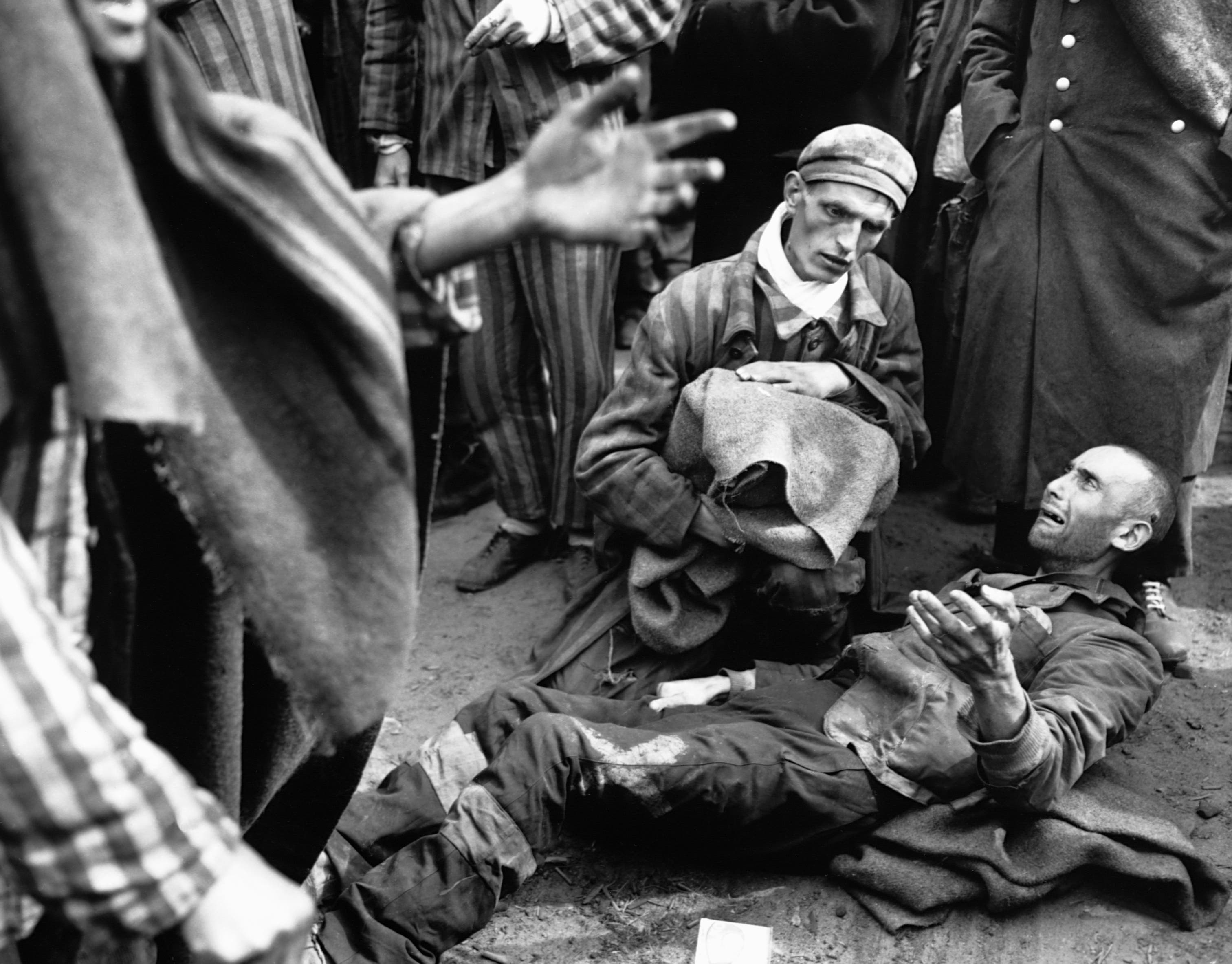
Survivors at the Wobbelin concentration camp in northern Germany were found by the U.S. Ninth Army in May 1945. Here, one man breaks out in tears when he finds he is not leaving with the first group to be taken to the hospital.
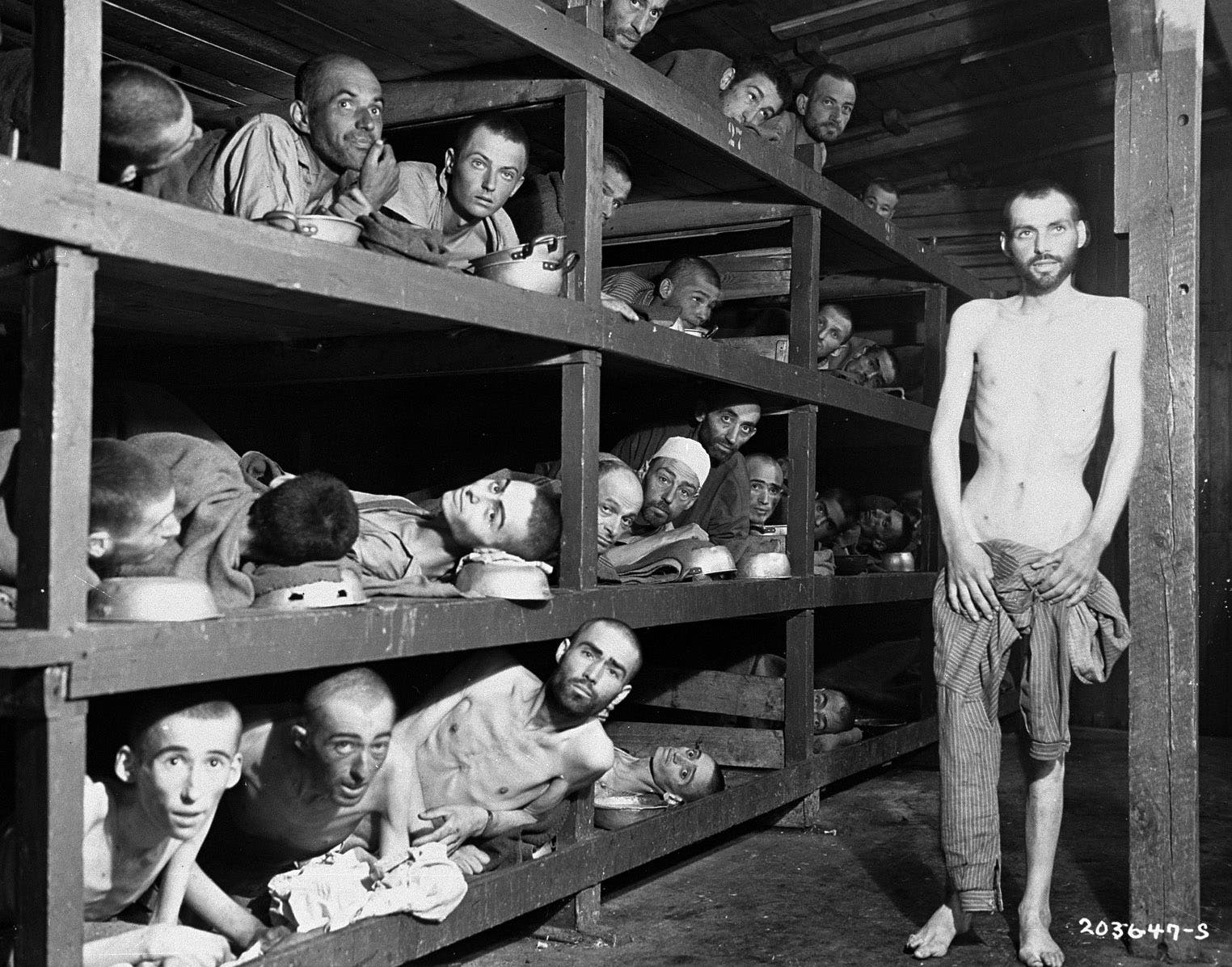
Survivors at Buchenwald concentration camp are shown in their barracks after liberation by the Allies in April 1945. The camp was located in a wooded area in Ettersberg, Germany, just east of Weimar. Elie Wiesel, the Nobel Prize winning author of Night, is on the second bunk from the bottom, seventh from the left.
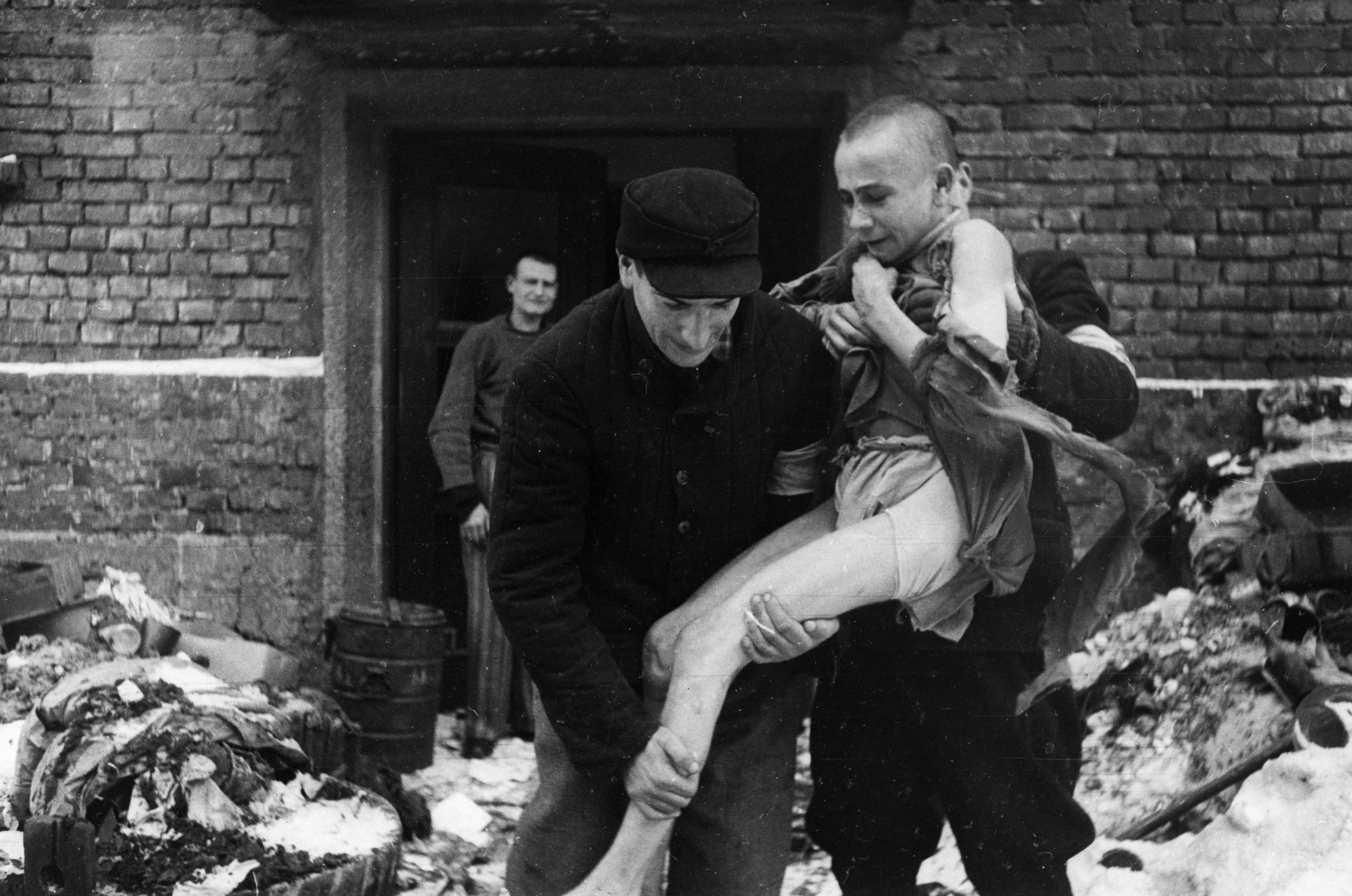
Fifteen-year-old Ivan Dudnik was brought to Auschwitz from his home in the Oryol region of Russia by the Nazis. While being rescued after the liberation of Auschwitz, he had reportedly gone insane after witnessing mass horrors and tragedies at the camp.

Allied troops are shown in May 1945 discovering Holocaust victims in a railroad car that did not arrive at its final destination. It was believed this car was on a journey to the Wobbelin concentration camp near Ludwigslust, Germany where many of the prisoners died along the way.
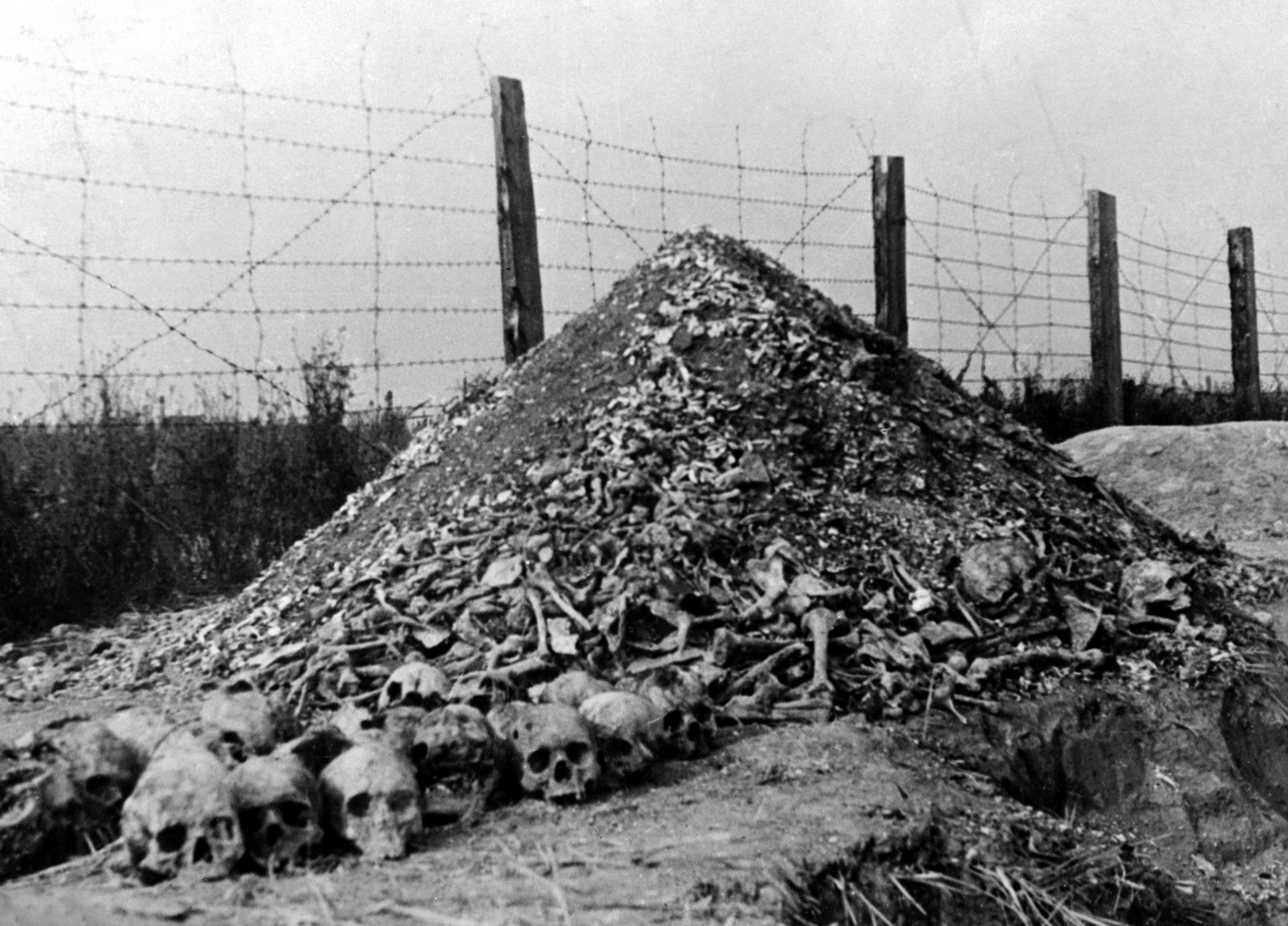
A total of 6 million lives were lost as a result of the Holocaust. Here, a pile of human bones and skulls is seen in 1944 at the Majdanek concentration camp in the outskirts of Lublin, Poland. Majdanek was the second largest death camp in Nazi-occupied Poland after Auschwitz.

A body is seen in a crematory oven in the Buchenwald concentration camp near Weimar, Germany in April 1945. This camp not only imprisoned Jews, it also included Jehovah’s Witnesses, gypsies, German military deserters, prisoners of war, and repeat criminals.

A few of the thousands of wedding rings removed by Nazis from their victims that were kept to salvage the gold. U.S. troops found rings, watches, precious stones, eyeglasses and gold fillings in a cave adjoining the Buchenwald concentration camp on May 5, 1945.
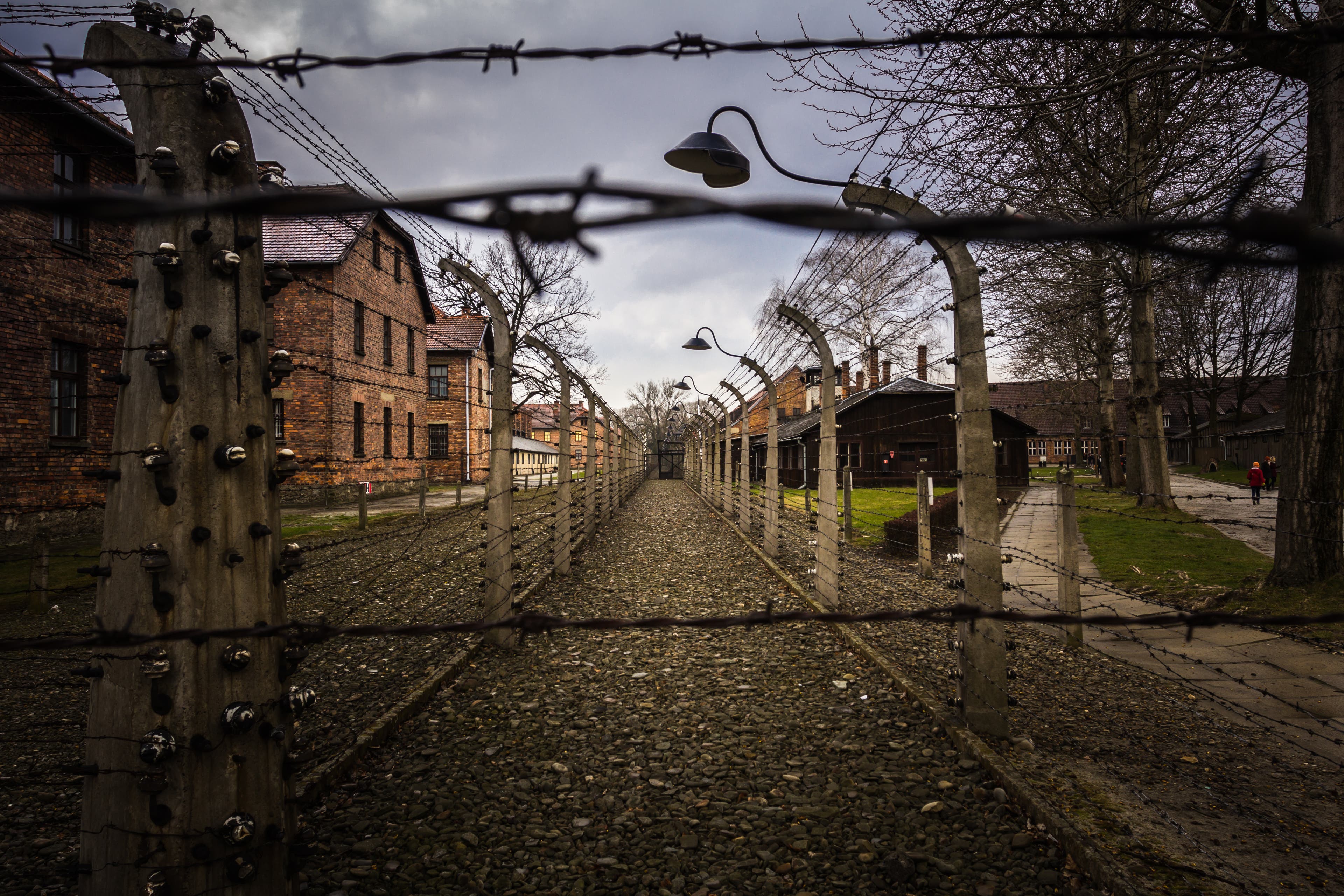
Auschwitz camp, as seen in April 2015. Nearly 1.3 million people were deported to the camp and more than 1.1 million perished. Although Auschwitz had the highest death rate, it also had the highest survival rate of all the killing centers.

Battered suitcases sit in a pile in a room at Auschwitz-Birkenau, which now serves as a memorial and museum. The cases, most inscribed with each owner’s name, were taken from prisoners upon arrival at the camp.

Prosthetic legs and crutches are a part of a permanent exhibition in the Auschwitz Museum. On July 14, 1933, the Nazi government enforced the “Law for Prevention of Progeny with Hereditary Diseases” in their attempt to achieve a purer “master” race. This called for the sterilization of people with mental illness, deformities, and a variety of other disabilities. Hitler later took it to more extreme measures and between 1940 and 1941, 70,000 disabled Austrians and Germans were murdered. Some 275,000 disabled people were murdered by the end of the war.
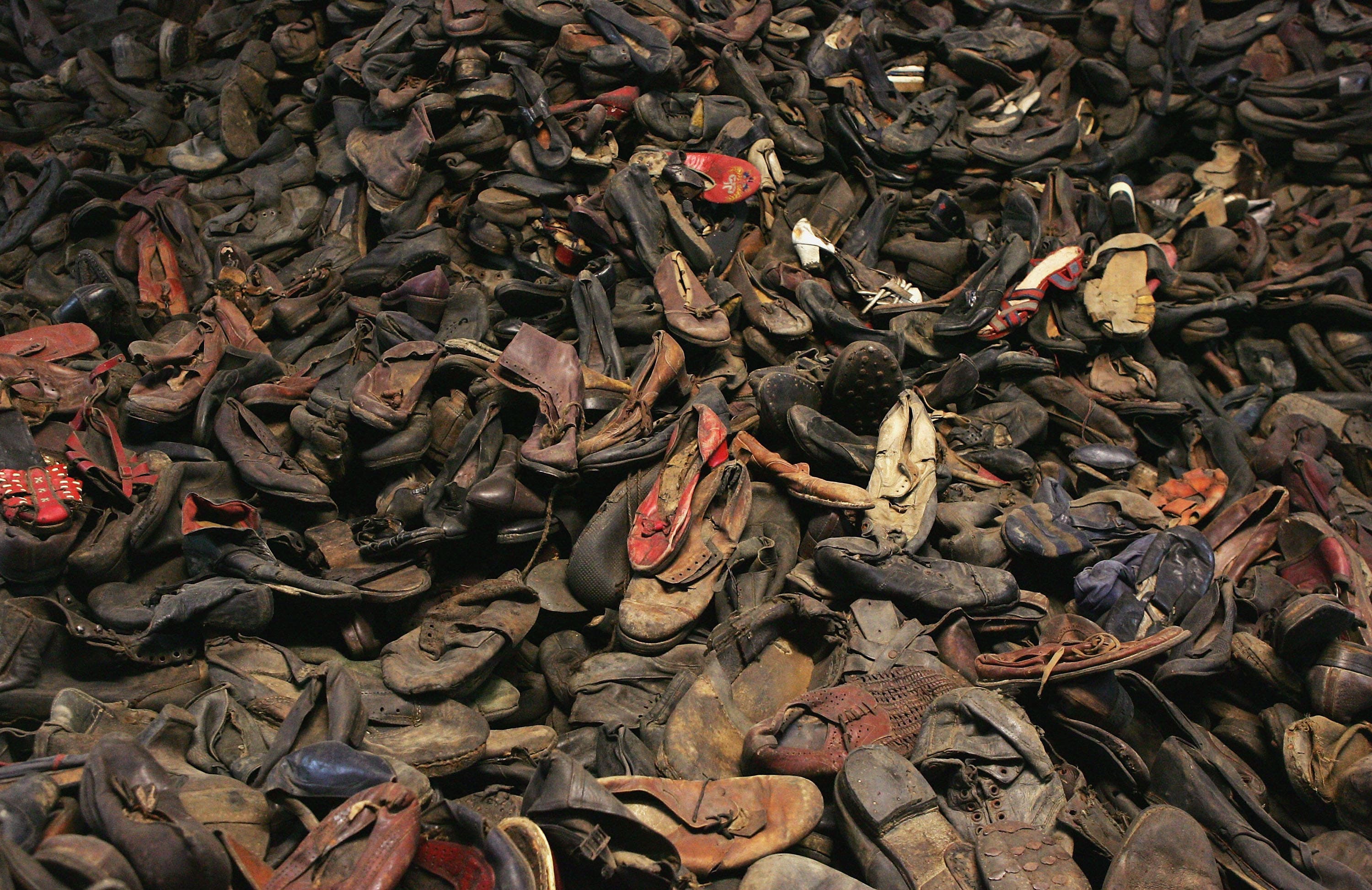
A pile of footwear are also a part of the Auschwitz Museum.
1 / 12: DeAgostini/Getty Images
In the aftermath of the war, scientists grappled with the aftermath of Nazi experimentation and the Holocaust’s use of eugenic principles in the name of genocide. In 1946, a group of German physicians who had carried out euthanasia and conducted medical experimentation in Nazi death camps were tried at Nuremberg during a 140-day-long trial. The trial resulted in seven death sentences and the Nuremberg Code, a set of research ethics that has influenced modern concepts of informed consent and medical experimentation.
Only 200 of the 3,000 twins subjected to medical experiments at Auschwitz survived. Among them were Eva and Miriam. In the 1970s, Eva Mozes Kor began lecturing about her experiences and seeking out other survivors. Eventually, she and Miriam formed a nonprofit called Children of Auschwitz Nazi Deadly Lab Experiments Survivors (CANDLES) and tracked down more than 100 other twin survivors, documenting their experiences and the health ramifications of the often unknown experiments they had been subjected to at Auschwitz.
Most records of experimentation at Auschwitz were destroyed, but the lives of people like Eva Mozes Kor, who died in July 2019 at age 85, bear witness to the twin experiments’ brutality. Ironically, the very type of experimentation Nazi physicians thought would uphold the pseudoscience they used to justify genocide ended up undermining the field of eugenics. In the face of unconvincing data revealed by twin studies and worldwide condemnation of Nazi medical experiments, scientists abandoned eugenics en masse and the field died out.
Today, the concept of twin studies has been challenged by research that demonstrates genetic variations even among identical twins. But twin studies are still used to learn more about age-related disease, eating disorders, sexual orientation and more, while a groundbreaking study of twin NASA astronauts is shedding new light on how microgravity affects the human body. But though twins remain invaluable to researchers today, twin studies are still a subject of debate among scientists eager to sidestep their hideous history.